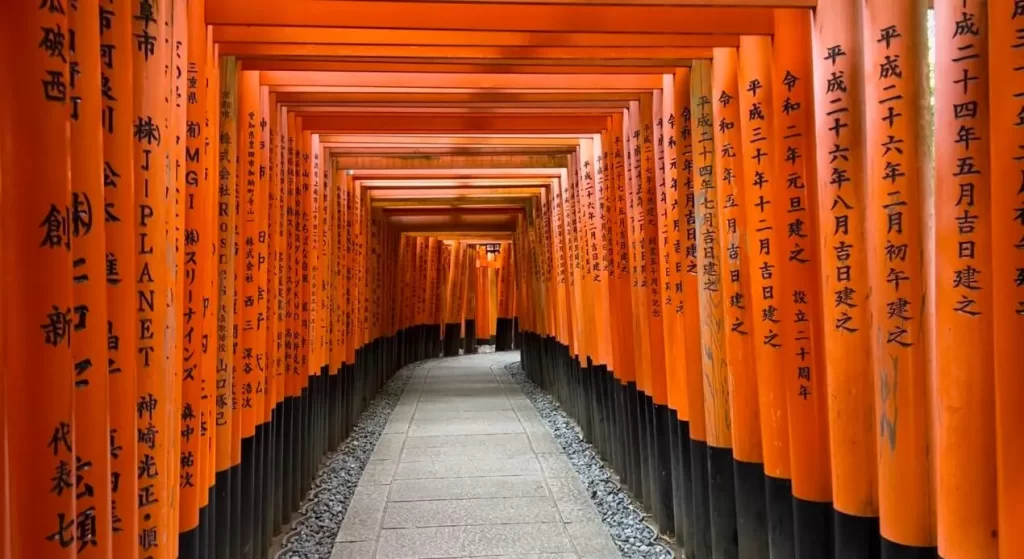
Planning a trip to Kyoto in Japan? Kyoto is the center of traditional Japanese culture and is characterized by colorful temples, geisha culture, and multi-course kaiseki meals using fresh seasonal ingredients. Its rich history and vibrant culture make it a must-see city for any Japan trip.
This guide tells you everything you need to know about Kyoto, including the best things to do, where to eat, how to get around, and more!
Top 10 Attractions to See in Kyoto in Japan
Here’s a rundown of the top things to see & do on your first visit to Kyoto! Some attractions are free, but most of the temples and shrines have an entrance fee of 200-600 Yen.
1) Gion – Kimono Rentals & Hokan-Ji (Pagoda)
Gion is Kyoto’s most famous “Geisha District”. The streets are lined with traditional Japanese-style buildings that have been transformed into souvenir shops and restaurants.

The most popular street is undoubtedly Hanami-Koji. Another must-see street is Ninenzaka. There are plenty of food stalls selling pickled cucumber, dango, matcha soft serves, etc. It’s also home to the world’s first tatami Starbucks!
Along the streets, you’ll see many young men and women wearing traditional Japanese clothing. Many tourists rent a kimono for the day. Check out JapanCheapo’s Article for more info on Kimono rentals.
As you walk through, stop by Hokan-Ji, a pagoda. It’s really tall so you can’t miss it. While you can’t go inside, there are plenty of photo opportunities nearby in the streets of Gion.
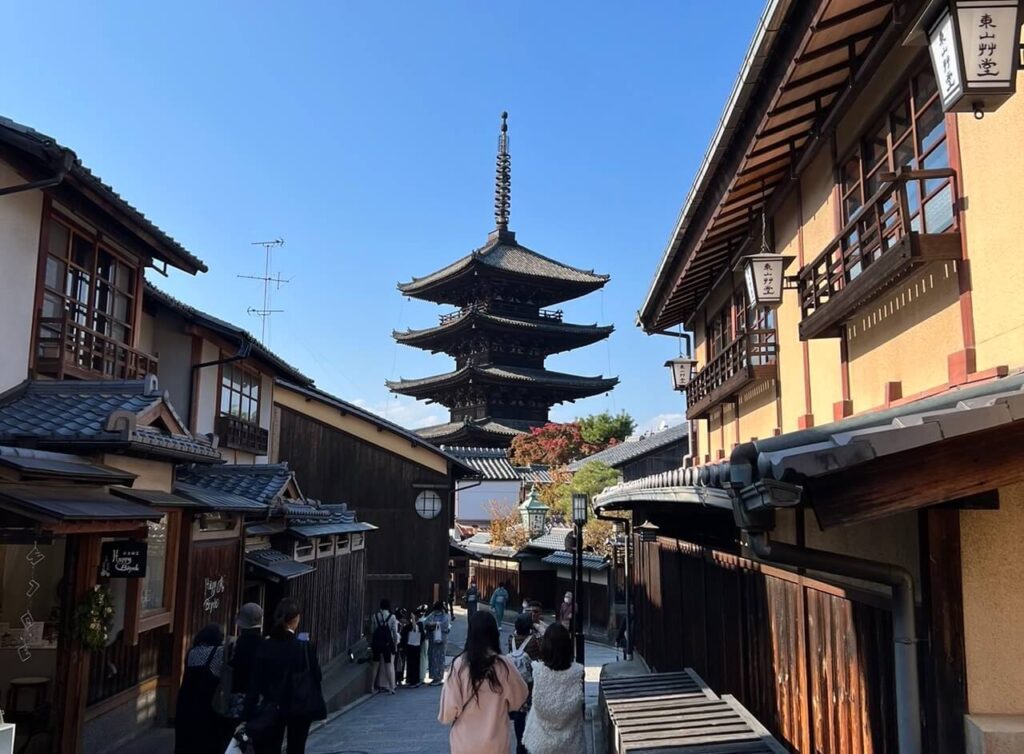
I recommend giving yourself at least half the day (3-5 hours) to explore the neighborhood. Not only are there many historic landmarks, but the streets themselves are very atmospheric. On my first visit, I found myself going into nearly every store.
2) Kiyomizu-Dera (Temple)
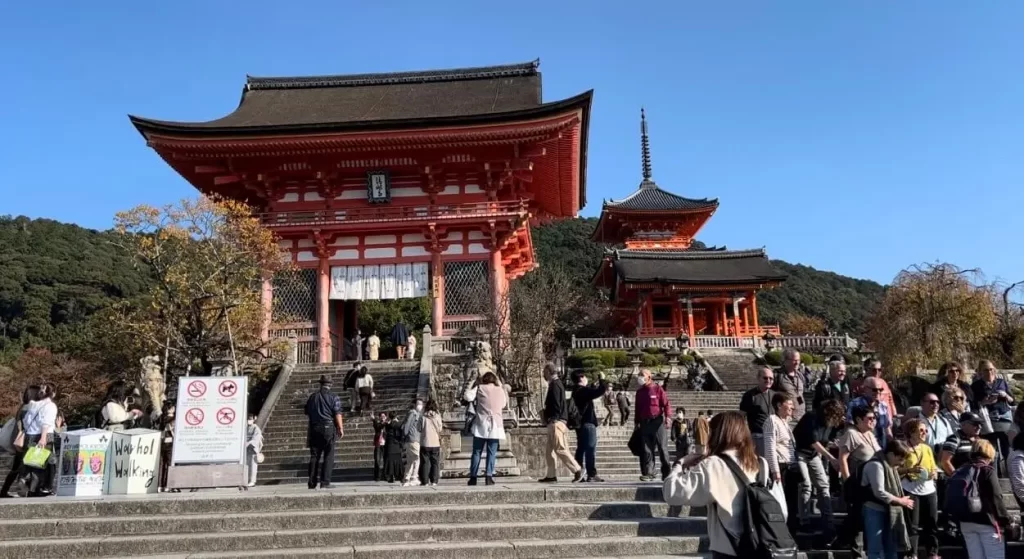
You can’t leave Gion without checking out this iconic temple. It was founded in 778, over 1250 years ago! Kiyomizu-Dera is located on a hill and is known for its beautiful views for every season. March to early April are the best viewing times for cherry blossoms. Mid-November to early December is the best time to see fall foliage.
While you’re at the temple, you can purify your body at their water pavilion or light some incense to pray. Their website gives information on proper prayer etiquette.
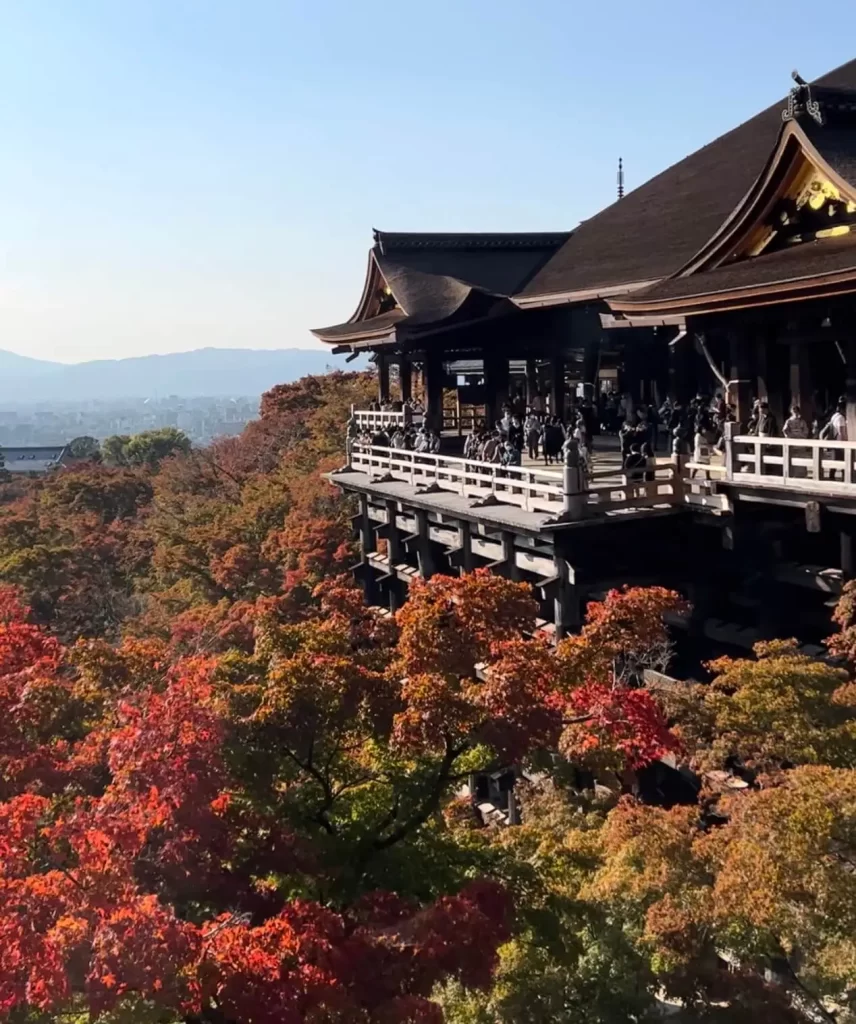
Admission: 400 Yen
How Much Time to Spend Here: 1 Hour
3) Nishiki Market
Located in Downtown Kyoto, Nishiki Market is a narrow shopping street filled with plenty of traditional Kyoto street foods. Some local delicacies include tofu, goma dango, and pickled vegetables. The market also has plenty of stalls selling pottery, trinkets, and other household goods. It’s only open from 10AM to 6PM, so go early to avoid the crowds.
JapanCheapo has a great in-depth guide to the market.
4) Fushimi (Shrine & 10,000 Torii Gates)
When most people think of Kyoto, Fushimi is often the first thing that comes to mind. The Ten Thousand Gates are exactly what it sounds like — rows and rows of bright red-orange gates. The red color symbolizes vitality and protection against evil!
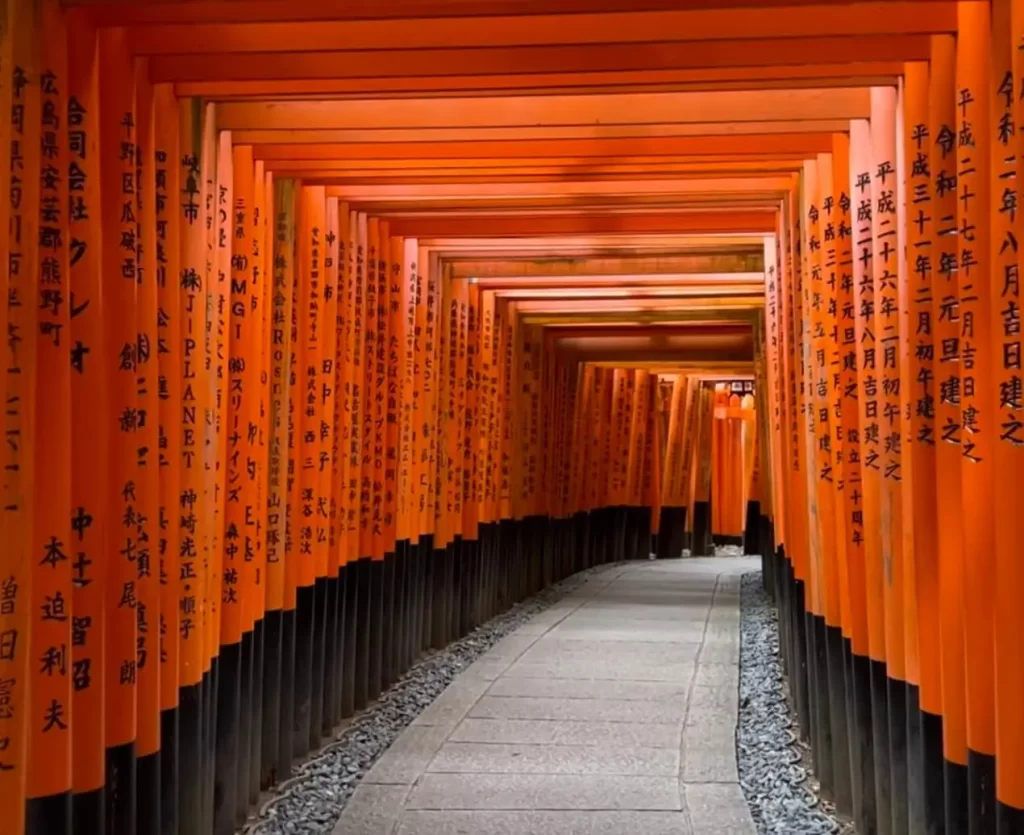
Come here as early as possible to avoid the large crowds. I went at 7AM and had the place mostly to myself. It was ideal since there were no other tourists in my pictures and I was able to walk the trail at my own pace. It felt unreal walking and hearing nothing but the sounds of the river and forest.
By the time we walked back at around 8 AM, it had gotten very busy. There was even a line at the gate just to take pictures. If you care about crowds ruining your shot, the earlier you go, the better. Some people go as early as 5 AM!
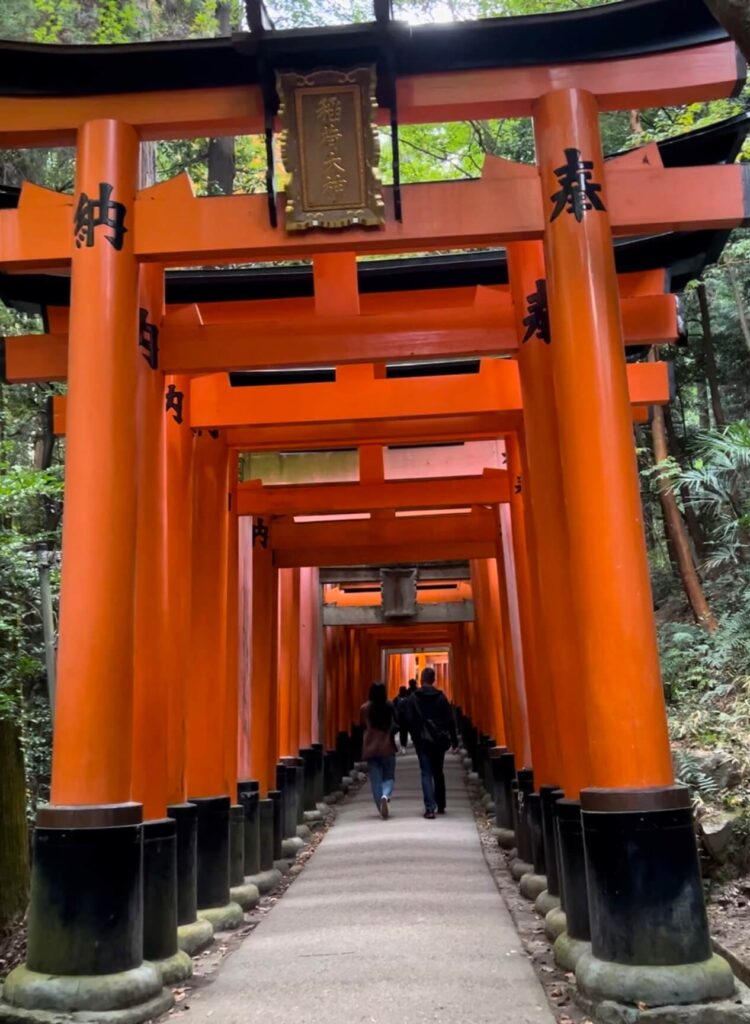
Few people know that Fushimi is actually located on a mountain and it takes around an hour uphill to get through the whole trail. I skipped the walk up (after a while it’s more of the same… gates), but it’s up to you whether you want to make the trek.
Admission: 600 Yen for adults & 300 Yen for children.
How much Time to Spend Here: 1-3 hours depending on whether you hike
Further Reading: The Ultimate Japan Packing List
5) Bamboo Forest in Arashiyama
Arashiyama is definitely my favorite area of Kyoto in Japan. A long river runs through two giant hills, making it very picturesque. In the warmer weather, you can go canoeing.
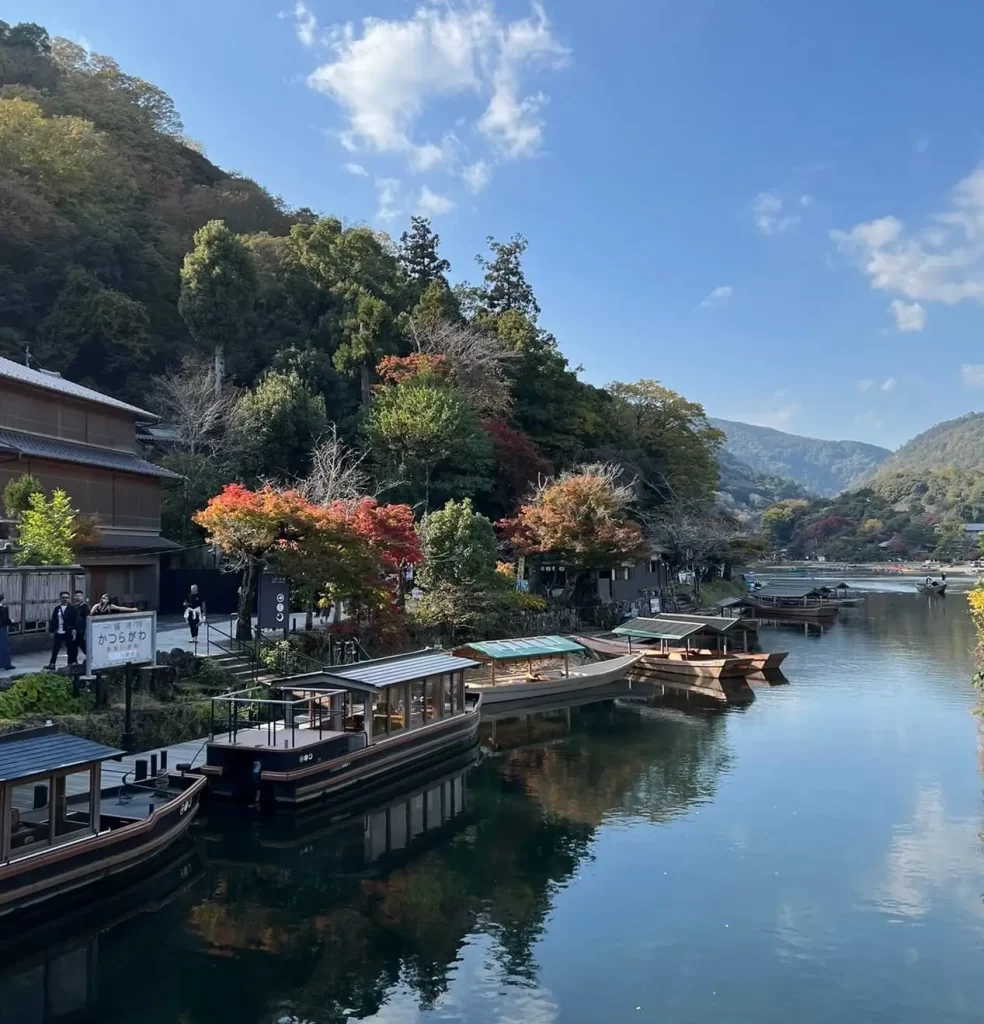
Just a 15-minute walk from the Saga-Arashiyama station is a forest with endless rows of bamboo trees. It’s one of the most photographed spots in Kyoto! Here’s a tip for taking pictures: Take them at an upward angle to capture the lush green of all the bamboo trees.
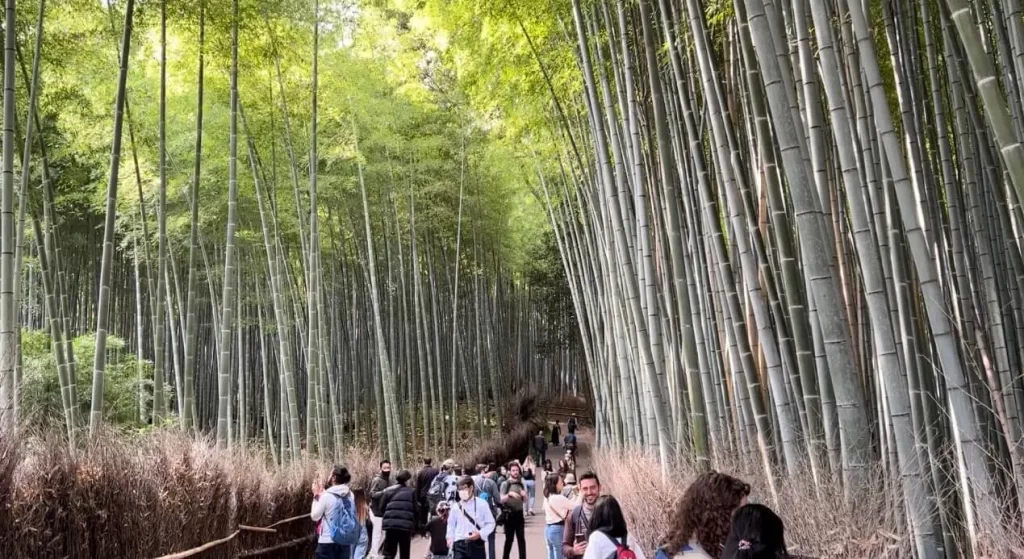
Admission: FREE
How Much Time to Spend Here: 30 minutes-1 Hour
6) Arashiyama Monkey Park
After you visit the Bamboo forest, Arashiyama Monkey Park is located just across the river. It has over 120 snow monkeys roaming freely on top of a hill.
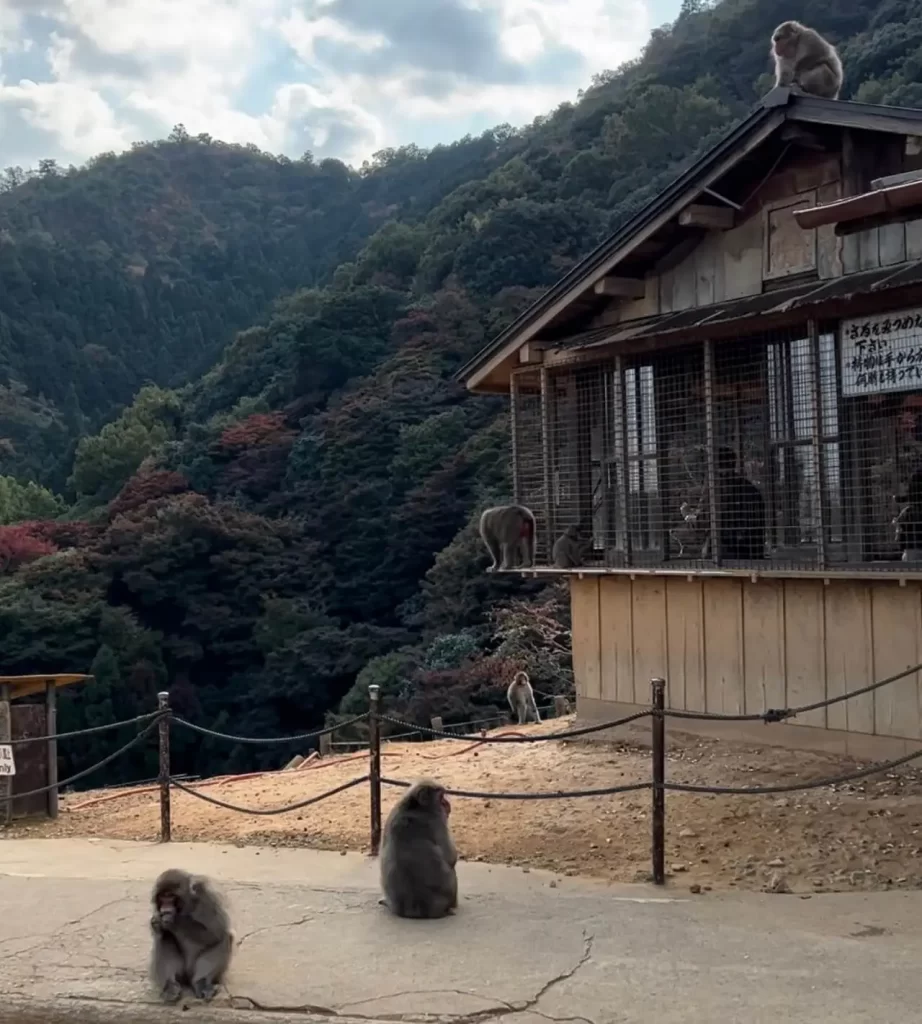
There is a small hut where you can safely feed the monkeys through a fence. You can’t bring your own food, but they have bags of apples, bananas, and nuts that you can purchase for 100 yen each.
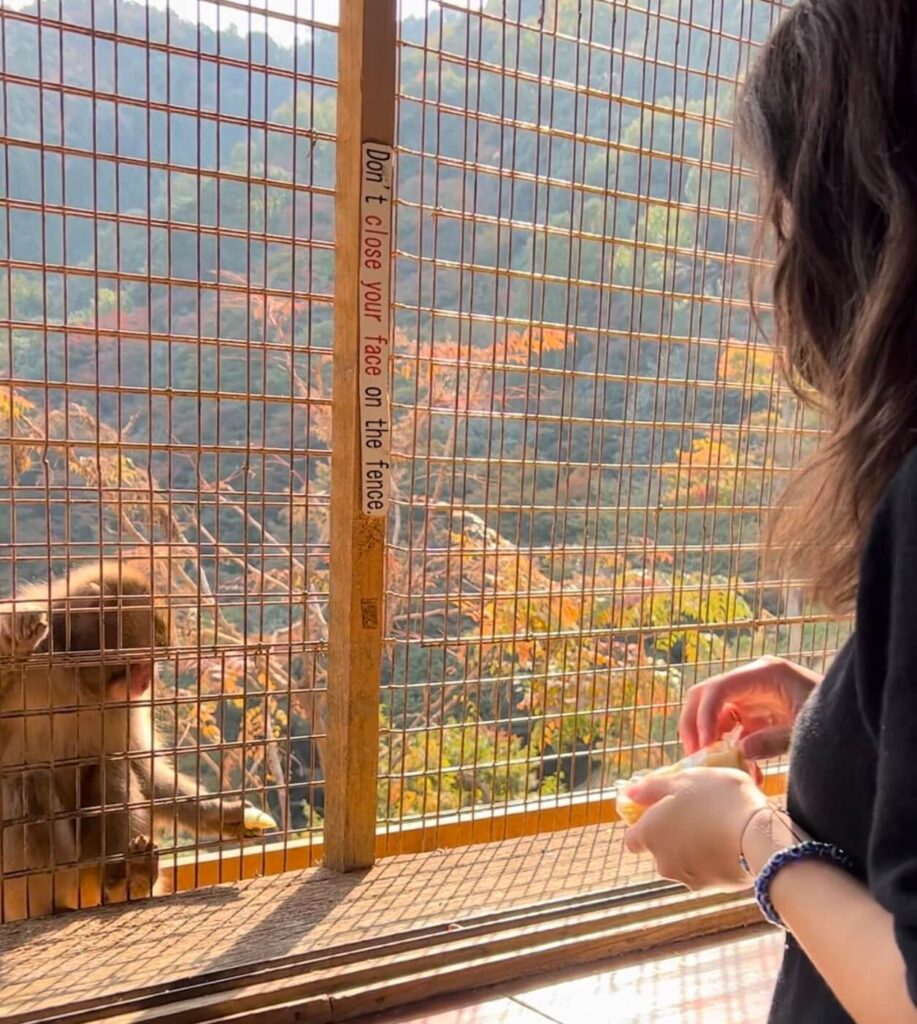
I wouldn’t necessarily call this place a tourist trap, but it’s very obviously targeted toward tourists. When I went it was 70-80% westerners, which was the most I saw in one place on my entire trip.
As someone from the U.S. where monkey parks aren’t a thing, I still found the experience to be worth it. It was quite interesting watching the monkeys interact with each other up close. Also, you get a really good overhead view of Kyoto!
I want to warn you that the walk-up is a HIKE. It took around 20 minutes of walking uphill to get there.
Admission: 550 Yen
How Much Time to Spend Here: 1-1.5 Hours
Traveling outside of Kyoto in Japan, too? Check out my detailed 5 Days in Tokyo Itinerary and my 2 Days in Osaka Itinerary!
7) Kinkaku-Ji (Golden Temple)
Out of everything I saw in Kyoto, nothing could have prepared me for how beautiful this temple is. Covered in a gold leaf coating, Kinkaku-Ji literally glows in the sun. Definitely add this to your Kyoto bucket list!
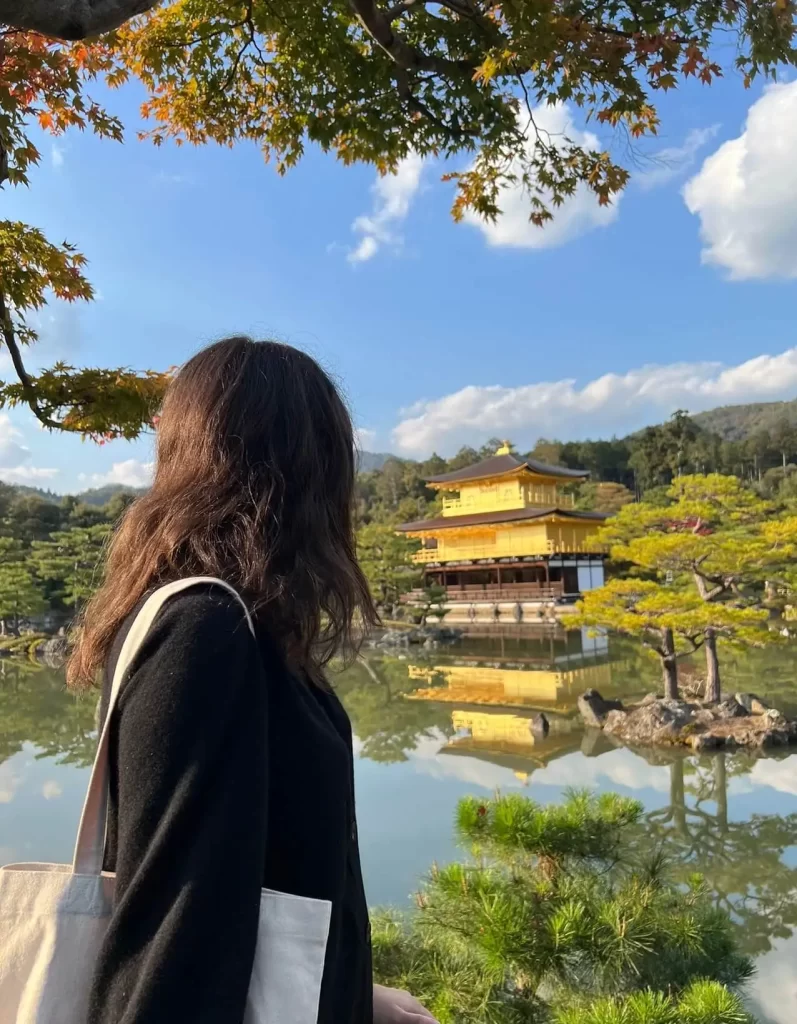
Admission: 400 Yen
How Much Time to Spend Here: 30 Min-1 hour
9) Ryoan-Ji (Zen Rock Garden)
This rock zen garden dates back to 140, when it was converted from an aristocrat’s villa. It’s now a UNESCO World Heritage Site! The formation of the rocks is carefully re-formatted every morning by monks.
Admission: 500 Yen for adults and 300 Yen for children
How Much Time to Spend Here: 30-45 minutes (It’s small)
9) Visit an Onsen or Stay in a Ryokan
For many foreigners, no visit to Kyoto in Japan is complete without experiencing an onsen! An onsen is a Japanese hot spring bath. The practice dates back to the sixth century. For more information, check out Agoda’s guide to Kyoto onsens.
If you’re really looking to immerse yourself in traditional Japanese culture, stay at a Ryokan. They are Japanese inns with tatami mats, futon beds, and elaborate kaiseki meals. Many of them have private onsens for guests. Check out this video guide for more:
10) Day Trip to Nara, Himeji, or Osaka
If time permits, I recommend taking a day trip from Kyoto to experience another city. Nara, Himeji, and Osaka are only 30 minutes to 1 hour from Kyoto Station by the JR line. Nara is famous for their deer park, where deer roam freely. You can even buy and feed them crackers.
Himeji is famous for the Himeji Castle (another UNESCO World Heritage site). There is also the Kokoen Garden attached to the castle. I honestly liked it even more than the castle itself.
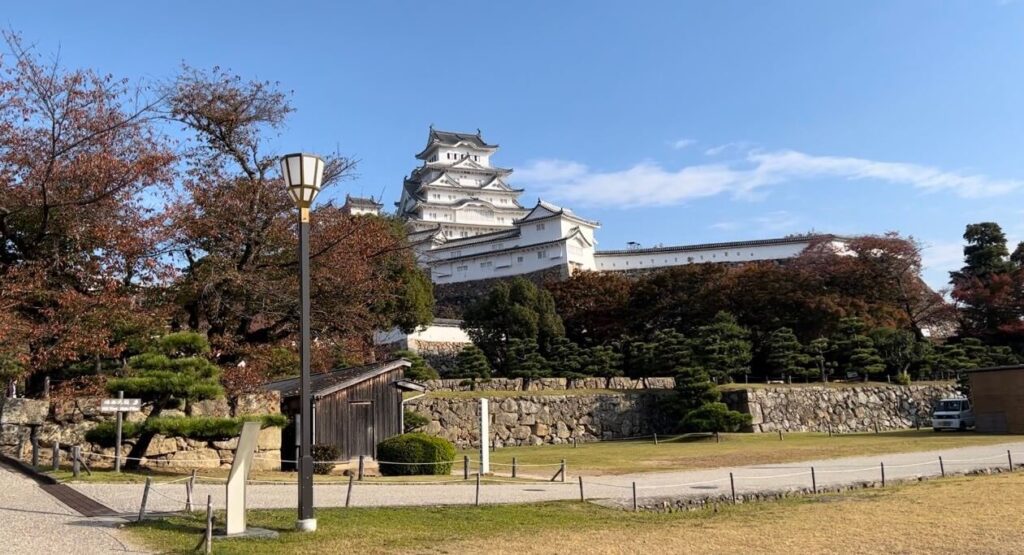
Last, if you’re not already planning to stay in Osaka, it’s a must-do day trip! They’re famous for street food including takoyaki and okonomiyaki. If you love shopping, you HAVE to go to Osaka. I generally don’t enjoy shopping but I had so much fun there. There is an endless variety of stores, so there is something for everyone.
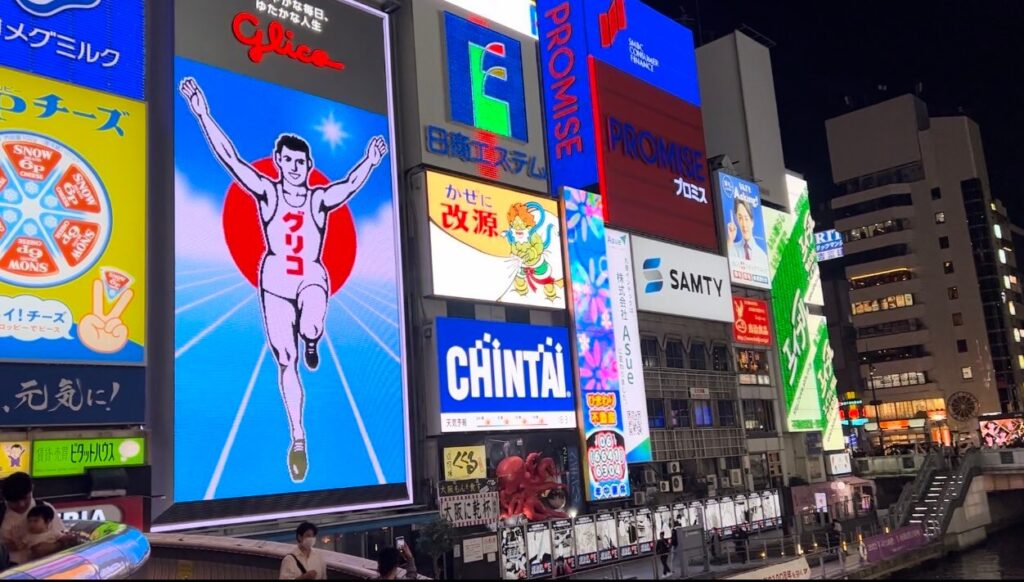
Restaurants & Dining in Kyoto in Japan
Tips for Dining in Kyoto
Before I dive into Kyoto’s dining scene, I have two important tips that I wish someone told me before my first trip to Japan.
First, most of the top restaurants require a reservation way in advance. These restaurants have very limited seating (6-12 seats) and limited hours. They are usually closed off to the public, meaning you have no chance of walking in and getting a seat without a reservation.
Some reservations are required by phone using a Japanese number. You can ask your hotel to call for you!
Second, there are SO MANY restaurants in Kyoto and the options can be overwhelming. I recommend using Tabelog to help find the best restaurants easily. It’s Japan’s version of Yelp/TripAdvisor except its grading scale is way harsher. Generally, any restaurant on Tabelog that has a 3.5-star rating or higher is equivalent to a 5-star rating on Yelp/Tripadvisor.
Famous Foods
Tofu → Kyoto’s clear water makes it perfect for high-quality tofu. Many Kyoto restaurants specialize in refined tofu dishes.
Kaiseki → This luxurious dining style is a must-do when in Kyoto. It’s a multi-course meal that uses the freshest ingredients from that season. It’s very similar to fine dining/haute cuisine in the West.
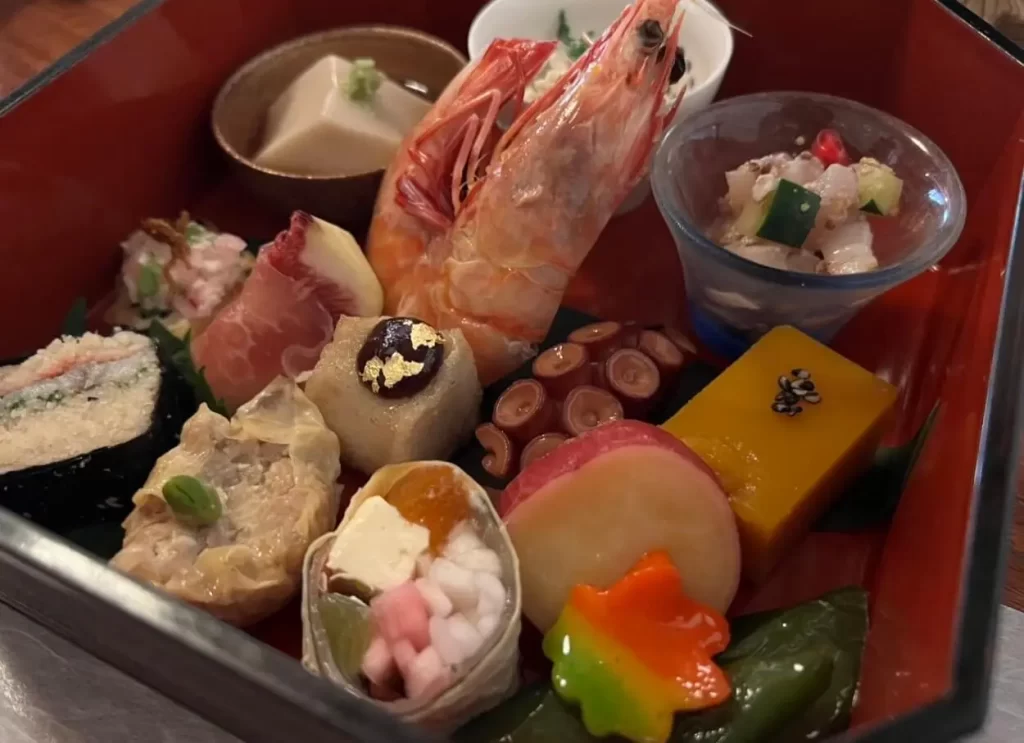
Warabimochi → This dessert is made with warabiko (broken starch) rather than glutinous flour in regular mochi. It has a jello consistency and is flavorless on its own. For flavor, it’s topped or dipped in kinako (sweet soybean flour). Warabimochi is especially popular in the summer since it’s considered refreshing! It has a unique flavor and texture so I recommend trying it for yourself. Gion Tokuya is a very famous shop for it.
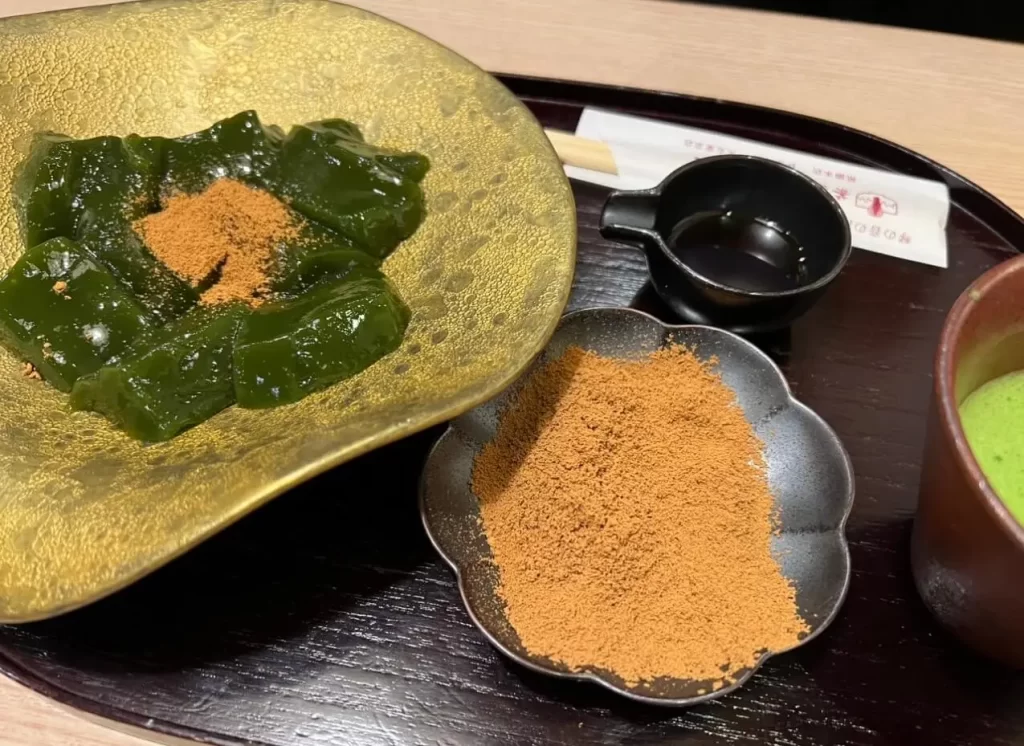
Green Tea Desserts → Another must-try in Kyoto is matcha desserts! Kyoto is known for having the highest quality green tea called “Uji Matcha”. You can find plenty of matcha cafes that sell matcha ice cream, parfaits, cakes, etc. Gion Tsujiri is a popular chain that I recommend.
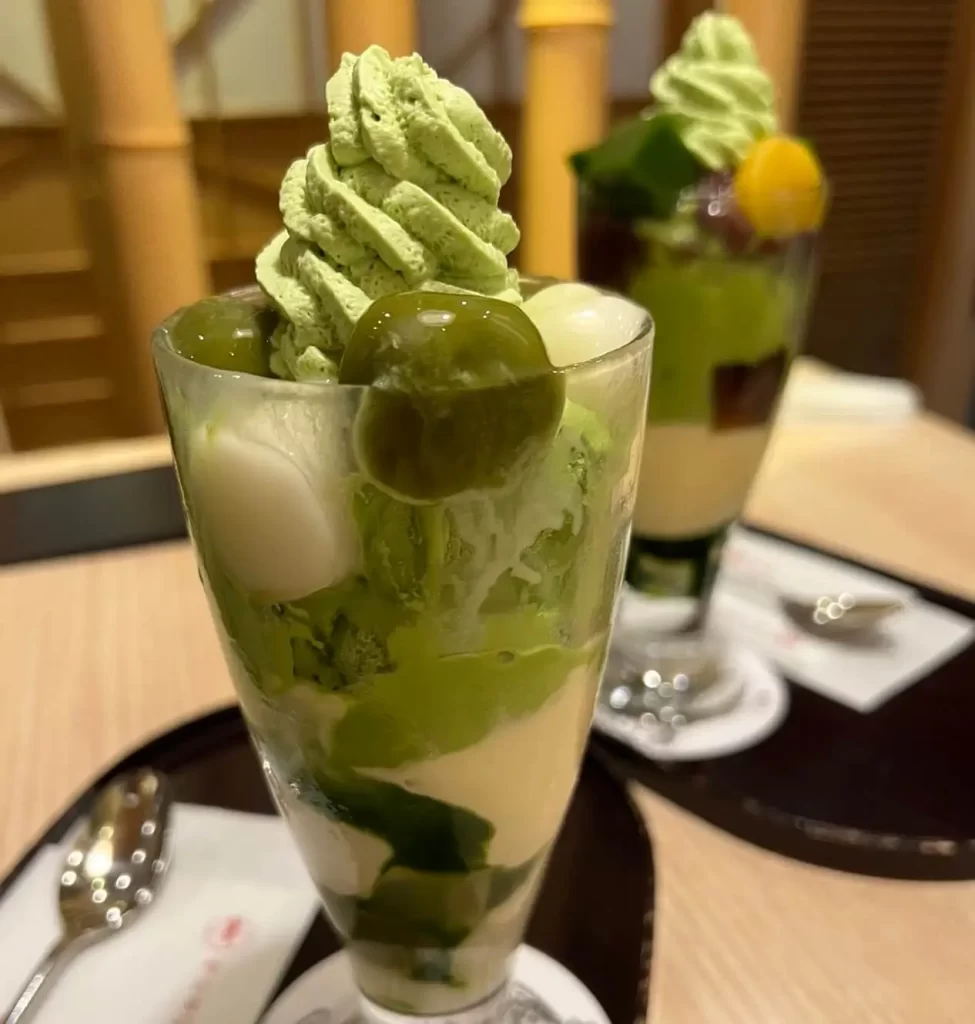
Must-Try Restaurants in Kyoto in Japan
- Yakiniku (Japanese BBQ) from Hiro, near Kyoto Station
This is the #1 meal I had in Japan. Hiro is a chain restaurant from Kyoto that specializes in Yakiniku, or Japanese BBQ. They buy entire cows to ensure that they have a variety of high-quality wagyu (Japanese beef). You grill the wagyu yourself at the table.
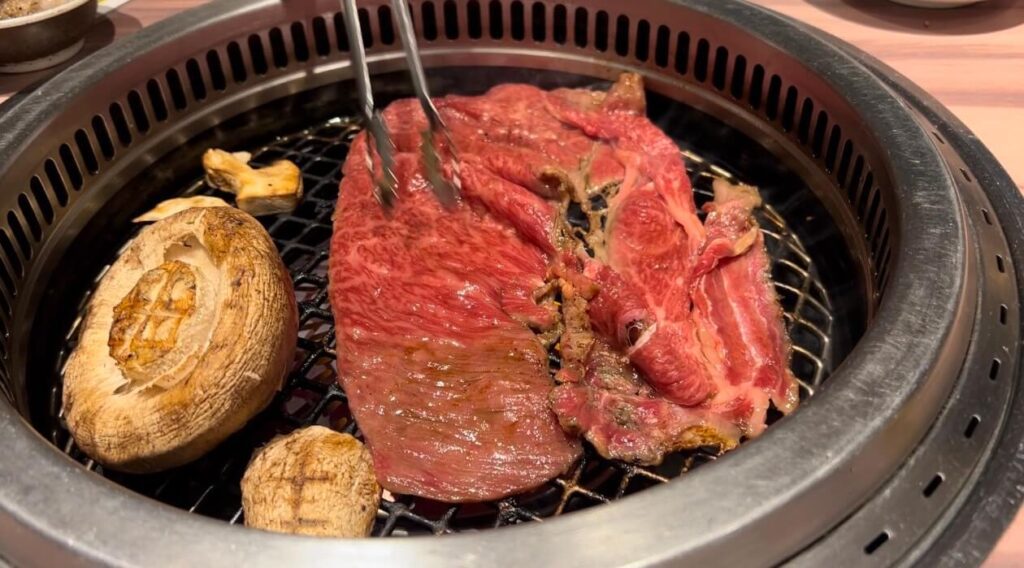
You can order a set menu or a la carte. My favorite menu items were the thin-cut rib meat and wagyu thigh in a spiraled shape. The beef had a beautiful marble and melted in my mouth!

There are several Hiro locations across Kyoto and Japan, but I visited the one that’s a 5-minute walk from Kyoto Station.
- Oyakodon at Wabiya Korekido, located in Gion (RESERVATION ONLY)
This is one of Kyoto’s top oyakodon restaurants. Oyakodon is a traditional Japanese rice dish with eggs, chicken, and vegetables. The ingredients are mixed in a similar way to Korean Bibimbap.
At Wabiya, oyakodon is first served in a stone bowl with two raw eggs. They then whisk the eggs into the dish to eventually cook it. You can add umami seasoning and seaweed to the bowl to your taste preference. However, I thought it was great on its own. The dark chicken meat was tender and the flavor was sweet and salty.
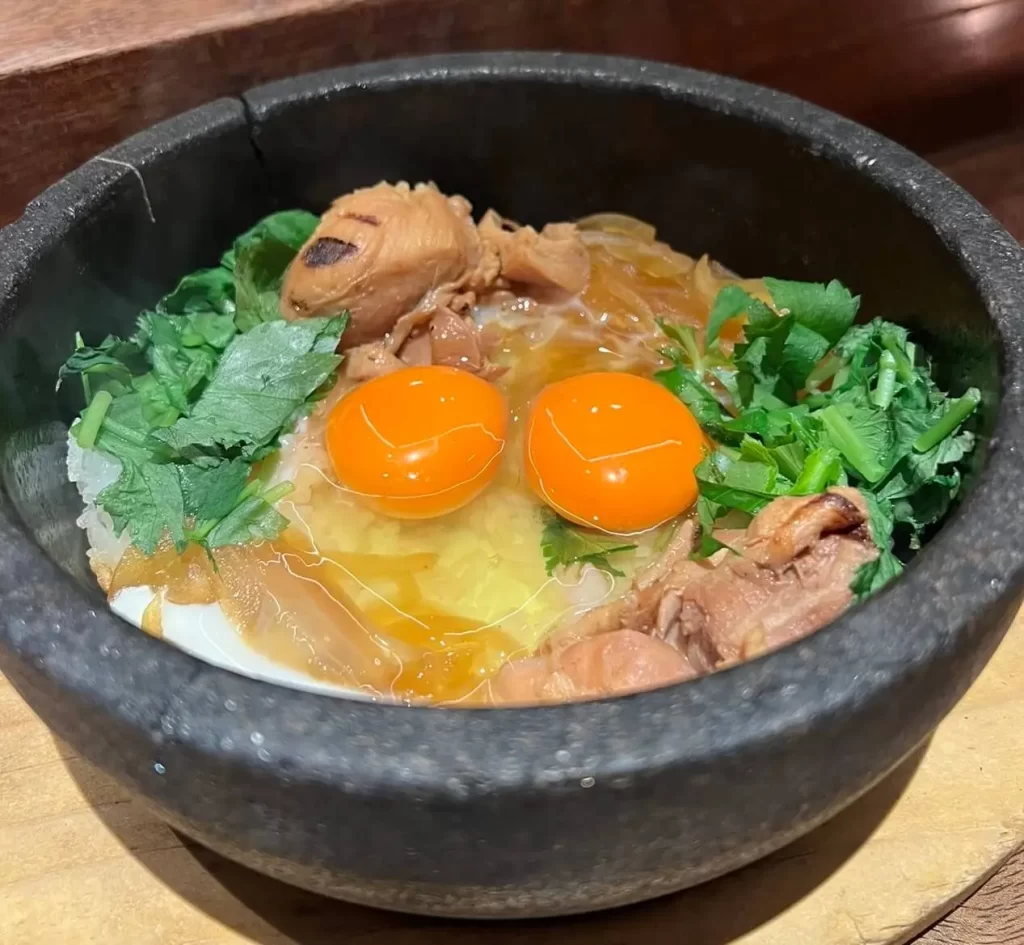
The rice at the bottom of the stone bowl eventually becomes crispy. Towards the end of the meal, they give you chicken stock to help soften the rice and eat it as soup.
The restaurant is located in Gion, so it’s the perfect lunch before sightseeing. At lunch they only sell oyakodon, but at dinner they also sell yakitori.
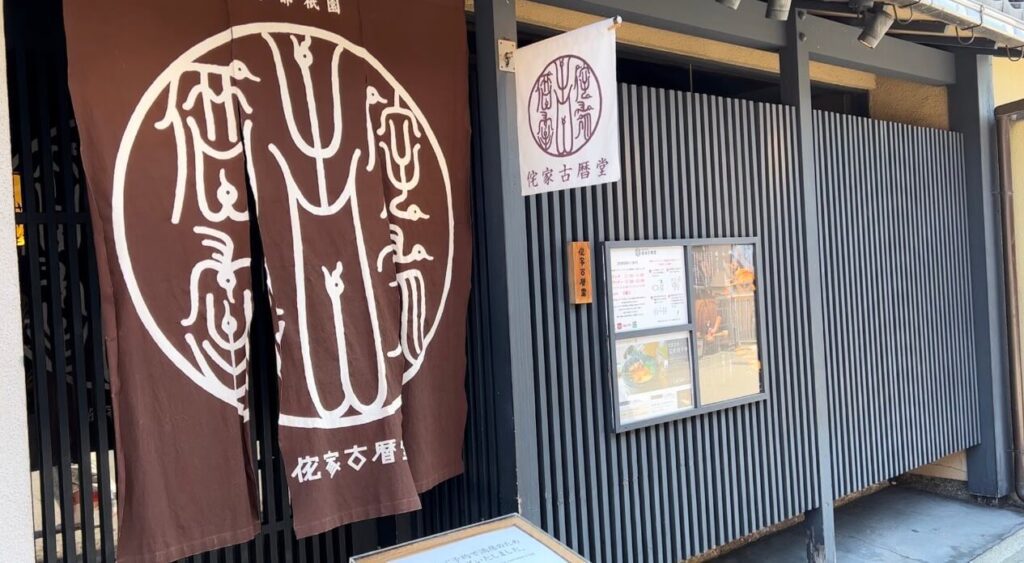
- Multi-Course Tofu Lunch at Shorian, located in Arashiyama (RESERVATION ONLY)
Located just a 5-minute walk from the Bamboo Forest is a hidden villa. This meal is a unique experience since it’s served in a traditional Japanese style.
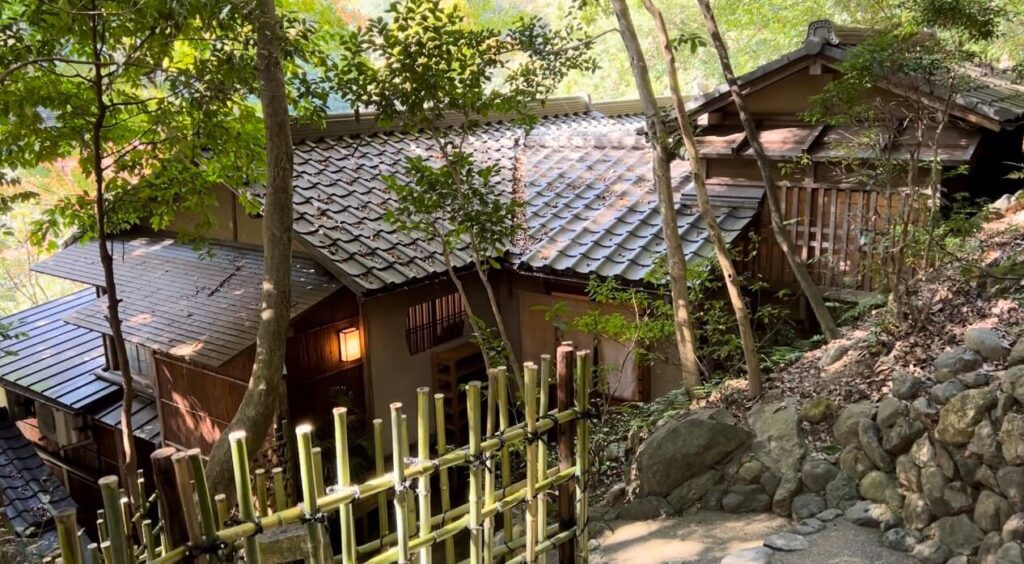
Once you enter the restaurant you have to take off your shoes and sit on tatami mats. I recommend reserving a table next to the window because you’re up in the trees and have the perfect view of the foliage.
The food itself is your choice of either 7-10 courses of tofu dishes prepared differently. They even have tofu-based ice cream for dessert!
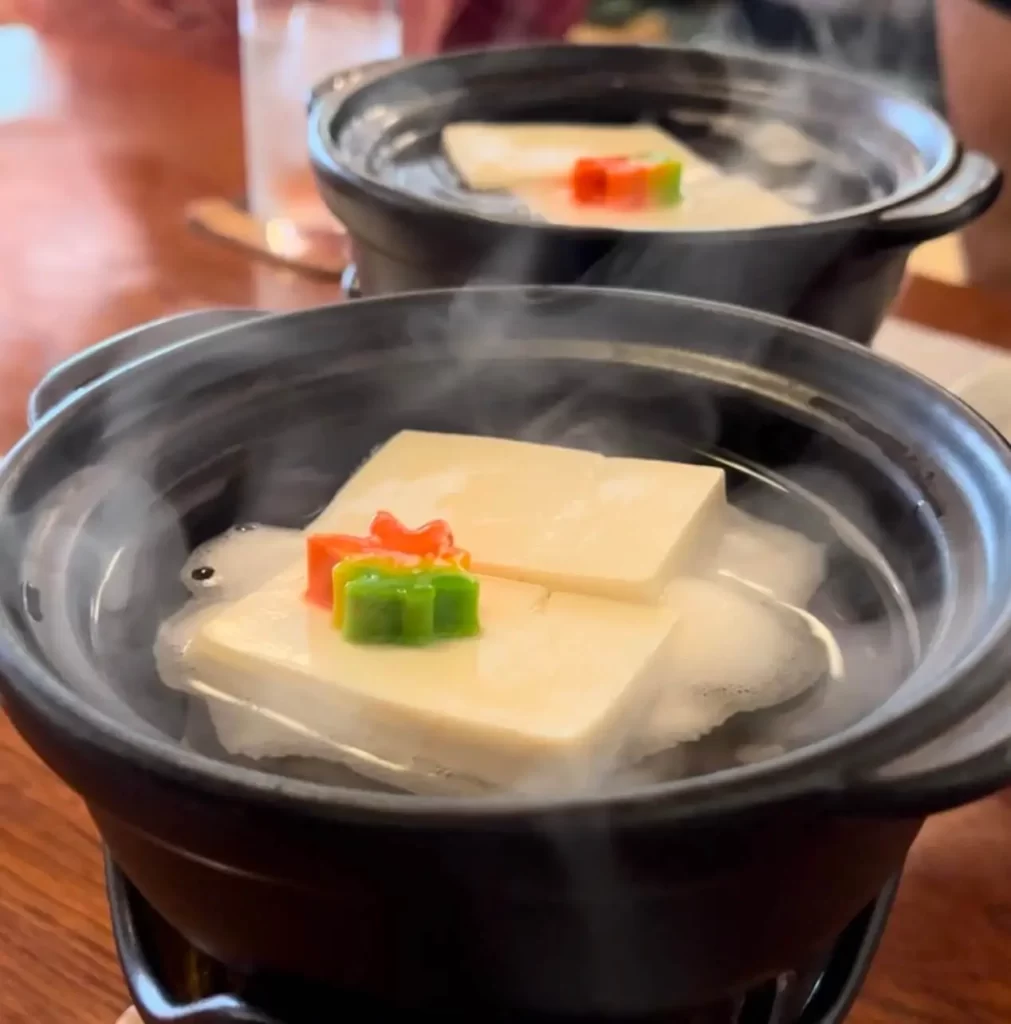
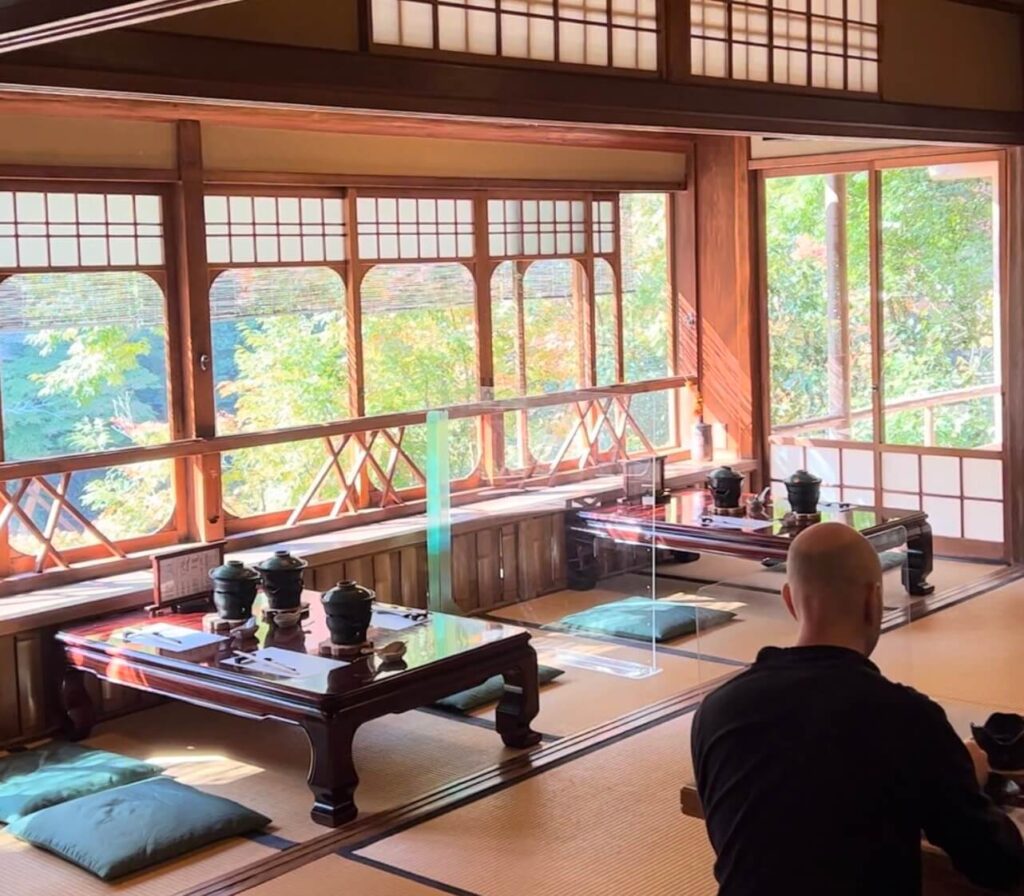
It’s a lot of food, so save your stomach for this. I made the mistake of eating breakfast the day of, and could barely finish my meal.
Getting Around Kyoto in Japan
Other than Gion, many of the tourist attractions in Kyoto are spread out. The city relies on its bus system to get around, NOT the subway. I recommend getting an unlimited bus day pass on a day you’re not spending in Gion. It can take 30 minutes to 1 hour to get from one landmark to another, so make sure to group attractions that are within walking distance. In the next section, I do it for you!
You can also take a taxi. Kyoto doesn’t have ride-sharing apps, but I was able to easily catch a taxi in touristy areas.
Itinerary for Kyoto in Japan
I recommend spending 3 days in Kyoto. You can easily see all the most famous landmarks and still have time for a day trip to a nearby city with your JR Pass.
1st Day: Gion – Oyakodon for Lunch – Warabimochi for Dessert – Hokan-Ji – Kiyomizu – Nishiki Market – Yakuniku
2nd Day: Fushimi – Arashiyama Bamboo Forest – Tofu or Kaiseki Meal – Kinkaku-Ju – Ryoan-Ji
3rd Day: Day Trip to Nara, Osaka, or Himeji. (I was able to visit Osaka the same day as Himeji since the Himeji Castle only took 1.5 hours to explore.)
Where to Stay in Kyoto in Japan
I recommend staying near Kyoto station. There are plenty of hotels near the station and it’s very convenient to get to touristy areas by train. It only takes 15-20 minutes to get to Gion. You can also easily take a day trip elsewhere since Kyoto Station is on the JR Line.
We stayed at the M Hotel just blocks away from Kyoto Station and I’d recommend it to anyone visiting.
Another popular area to stay in is Gion since it’s close to many of the tourist attractions.
Best Time to Visit Kyoto in Japan
The great thing about Kyoto is that the foliage is unique and beautiful for each season. The most popular times to visit are during cherry blossom season and fall foliage!
Best time to see Cherry Blossoms: March to early April
Best time to see Fall Foliage: Mid-November to early December
Conclusion: First Timer’s Guide to Kyoto in Japan
Hopefully, this provides you some insight into what to expect from your trip! On my first trip to Kyoto, I loved the fact that you could get a taste of both traditional Japanese culture and modern Japan all in one place.
The First-Timer’s Guide to Kyoto in Japan is the first part of my Japan Travel series. Osaka and Tokyo travel guides are both posted in my Japan travel archives.
In the meantime, please check out my other articles.
Lastly, I appreciate all the feedback. Please send any suggestions/content ideas to my contact page or leave a comment.
Leave a Reply